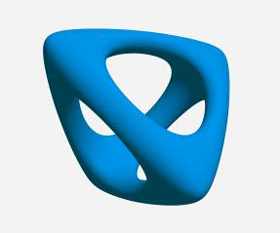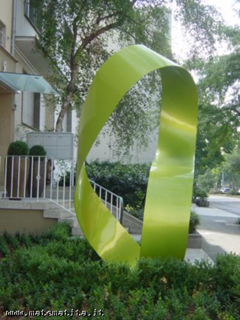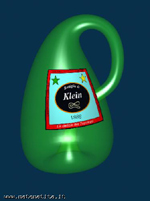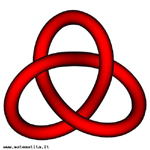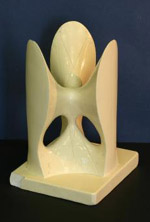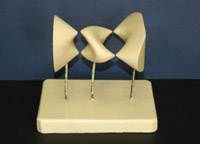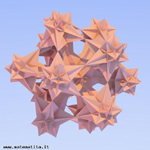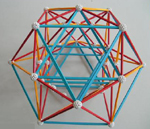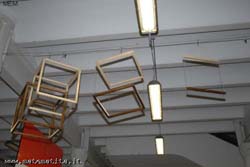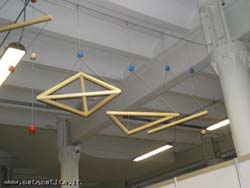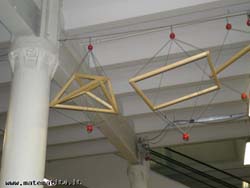This is the text of the poster you can see here.
When a Doughnut is Equal to a Coffee Mug
If you ask “How many and which are the different surfaces in Topology?”, the answer is given by a beautiful result in 1800. It says that any compact, connected and oriented surface without boundary is “equal” – from the viewpoint of a topologist – to one of the surfaces in a list of “standard” surfaces.
That of the oriented surfaces is recalled by the figures above here and it includes a sphere, a doughnut (a torus in mathematical terms), a sort of double doughnut with two holes, one with three holes, and so on.
They are infinitely many, but in a sense very “neat”.
The number of holes, which characterizes these surfaces, is called the genus of the surface. It represents the maximum number of cuttings (along closed simple curves) without decomposing the resulting surface in two pieces.
To avoid illusions, we must say that the number of “holes”, which is clearly evident for the surfaces in standard form, is not so readable for surfaces not in standard form. For example, the classification theorem says that the tetrahedral surface below is the same as one of the doughnuts of the list. Which one? It is the one with three holes (and not four!), but it is not so evident to recognize it.
We also have an analogous list for non-oriented (compact, connected, without boundary) surfaces. We can also fit in these two lists the case of surfaces with boundary. For instance, a disc is nothing else but a sphere with a hole and a cylinder is a sphere with two holes… a Moebius strip is the projective plane with a hole in it. The projective plane is the first surface in the list of non-oriented surfaces (the Klein bottle is the second one).
Thus, the problem of classifying topological surfaces is completely solved, which does not happen so often in Topology! There is a series of standard forms and given a (compact and connected) surface you know that it is “equal” to one of the standard forms. You also know what must be determined to decide which of these forms it coincides with. In fact, you need to know if it is orientable. Next, you need to count the number of boundary components (if it is just one circumference, or if there are two or seven of them) and, finally, you need to compute the genus.
Now, you may try to recognize the surfaces of this section of the catalog!




